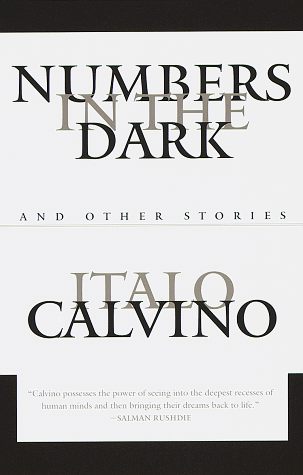Vintage classics
5 total works
Italo Calvino began his writing in his teens. He wrote every day wherever he was and at his death left behind a huge body of work, including numerous stories and fables, many of which have never been published in book form before. The texts collected in this volume span the whole of his career from 1943, when he was nineteen, to 1985 the year of his death.
Why Read the Classics is a collection of thirty-six essays by Italo Calvino on 'his' classics: the writers, poets and scientists who had meant most to him at different stages of his life. After the title essay, which explores several original definitions of what makes a classic, the pieces range in time from antiquity (Homer, Ovid) through early modern and Enlightenment Europe (Ariosto, Defoe, Diderot, Voltaire) to the masters of the nineteenth-century novel (Stendhal, Balzac, Flaubert, Dickens, Tolstoy, Conrad), before dealing with Calvino's early American mentors (Twain, James, Hemingway) and contemporaries such as Borges, Pasternak and Queneau. The essays also offer the most comprehensive sample yet available of Calvino the literary critic in substantial articles which he wrote over a period of thirty years from the 1950s to his death in 1985.
Why Read the Classics constitutes Calvino's literary canon, sheds fascinating light on the key texts which influenced this major twentieth-century fantasist and postmodernist, and proves that even if he had not become an internationally renowned fiction writer Calvino would have ranked among the most interesting essayists and critics of the twentieth century.
Why Read the Classics constitutes Calvino's literary canon, sheds fascinating light on the key texts which influenced this major twentieth-century fantasist and postmodernist, and proves that even if he had not become an internationally renowned fiction writer Calvino would have ranked among the most interesting essayists and critics of the twentieth century.
Italo Calvino, one of the world's best storytellers, died on the eve of his departure for Harvard, where he was to deliver the Charles Eliot Norton Lectures in 1985-86. Reticent by nature, he was always reluctant to talk about himself, but he welcomed the opportunity to talk about the making of literature. In the process of devising his lectures--his wife recalls that they were an "obsession" for the last year of his life--he could not avoid mention of his own work, his methods, intentions, and hopes. This book, then, is Calvino's legacy to us: those universal values he pinpoints for future generations to cherish become the watchword for our appreciation of Calvino himself.What about writing should be cherished? Calvino, in a wonderfully simple scheme, devotes one lecture (a memo for his reader) to each of five indispensable literary values. First there is "lightness" (leggerezza), and Calvino cites Lucretius, Ovid, Boccaccio, Cavalcanti, Leopardi, and Kundera--among others, as always--to show what he means: the gravity of existence has to be borne lightly if it is to be borne at all. There must be "quickness," a deftness in combining action (Mercury) with contemplation (Saturn). Next is "exactitude," precision and clarity of language. The fourth lecture is on "visibility," the visual imagination as an instrument for knowing the world and oneself. Then there is a "tour de force" on "multiplicity," where Calvino brilliantly describes the eccentrics of literature (Elaubert, Gadda, Musil, Perec, himself) and their attempt to convey the painful but exhilarating infinitude of possibilities open to humankind.The sixth and final lecture - worked out but unwritten - was to be called "Consistency." Perhaps surprised at first, we are left to ponder how Calvino would have made that statement, and, as always with him, the pondering leads to more. With this book Calvino gives us the most eloquent, least defensive "defense of literature" scripted in our century - a fitting gift for the next millennium.Esther Calvino has supervised the preparation of this book. She is Italo Calvino's Argentinian-born wife and a translator for several international organizations. Among Calvino's best-known works of fiction are "Invisible Cities, Cosmicomics, The Baron in the Trees, if on a winter's night a traveler, and Mr. Palomar."
Set on the Ligurian coast during World War II, The Path to the Spiders' Nests tells the story of Pin, a cobbler's apprentice who lives with his sister, a prostitute, and spend as much time as he can at the local bar. When his friends dare him to steal a pistol from a Nazi soldier, he sets off on a series of picaresque adventures with a band of partisans. Calvino's portrayal of this band, seen through the eyes of the child, is not only a revealing commentary on the Italian resistance, but also a moving coming-of-age story. First published in 1947, and reissued here in a revised translation that incorporates the changes Calvino himself made to the text, The Path to the Spiders' Nests is a bold, adventurours first novel animated by the formidable imagination that was to make Italo Calvino one of the most respected writers of the second half of this century.
Three tales, each dominated by one of three senses, present a married couple touring Mexico, a tyrant made prisoner of contradictory messages, and a fashionable Parisian and a drugged rock musician impassioned by scents.


